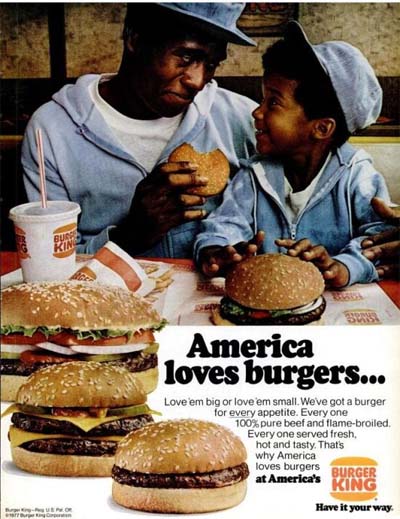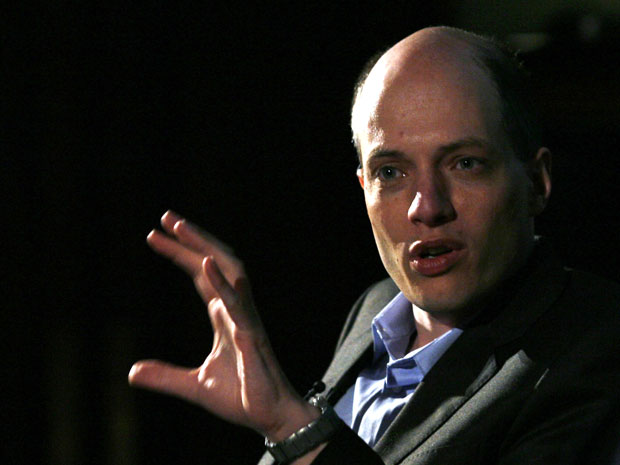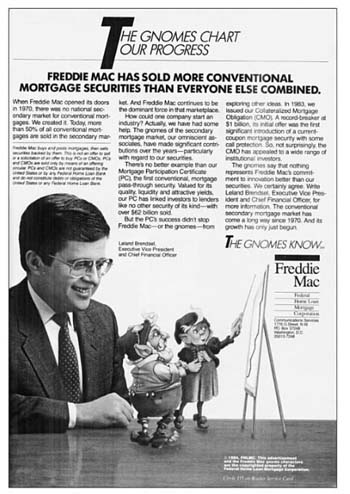(This is the nineteenth entry in the The Modern Library Reading Challenge, an ambitious project to read the entire Modern Library from #100 to #1. Previous entry: A Bend in the River)
 For more than a decade, I have nursed a grandiose grudge towards Wallace Stegner that has less to do with the eco-friendly West Coast bigshot’s literary streetcred and more to do with my own irrepressible ineptitude concerning matters of the boudoir.
For more than a decade, I have nursed a grandiose grudge towards Wallace Stegner that has less to do with the eco-friendly West Coast bigshot’s literary streetcred and more to do with my own irrepressible ineptitude concerning matters of the boudoir.
You see, in my early twenties, long before social networks made it astonishingly effortless to locate a no strings attached entanglement with a few clicks and a seductive missive, I had devised the foolhardy stratagem of attending numerous book clubs, hypothesizing that some law of averages would present me with a reliable method of meeting women. Because I could read thick books fairly quick, discussing the plots and style and themes with some modest wit and intelligence, I developed the odd notion that my quasi-bravura take, seamlessly enmeshed with the views of my peers, would somehow impress the comely damsels within my reach.
The older and more experienced women saw through my ruse, but they tolerated me as some lingering specimen of youthful bravado that reminded them why they were comfortably adult. I remember one happily married woman who was nice enough to give me occasional lifts back from Berkeley and who gently suggested that I lighten the fuck up.
At one point, I was in six book clubs just to keep my options open. While I did wake up in a few literary beds through blind clueless luck and some apparent appeal which I still remain largely in the dark about, it is safe to say that my efforts were mostly unsuccessful, though not as barren as they had been previously.
Now, for reasons probably having to do with Stanford’s proximity, Wallace Stegner was then very popular in the San Francisco Bay Area. And there was one book club I attended in the Outer Sunset where the title being discussed was The Spectator Bird. No problem. I had read it and discussed it before in another book club. On this second effort, there was a chestnut-haired twentysomething who I really liked and wanted to get to know better. The discussion went well and a number of the book club members riffed off what I had to say. Then I made some observation about Joe Allston’s feelings for the Countess being a bit overblown. Because every man had thoughts about other women. Was this really so adulterous?
But I apparently phrased these innocuous thoughts in a way that proved so tasteless that I was asked not to return to the book club.
I later learned that the woman I was trying to ask out for coffee was a family values type saving herself for marriage. There had clearly been no chance.
I took my folly out on Stegner, blaming him for my misfortunes and vowing never to read the man again.
It was the glint of cash that turned Stegner to fiction writing. During the Great Depression, he had just written his dissertation on the overlooked nineteenth-century naturalist Clarence Edward Dutton. He had come to Utah to teach and was making only $1,800 a year. His wife, Mary, was pregnant. And he saw an advertisement for a novelette contest from Little Brown. Like many of the misleading get rich quick schemes bulging from any issue of Writers Digest, Little Brown promised a $2,500 prize. But Stegner was a stubborn man of will. He sat down and wrote the presciently titled Remembering Laughter, which won the prize and was published in 1937.
There was more teaching and a series of insubstantial novels, until Stegner turned to his own life for material in his 1943 novel, The Big Rock Candy Mountain, and found some success. Still, it was nonfiction’s hard objectivity which guided Stegner during these years like a maritime man following Oléron. While he turned out a steady stream of dependable short stories, he was a late bloomer when it came to the novel’s fatter form. It took the introduction of Joe Allston in 1967’s All the Little Live Things for Stegner to perfect his character model of an older man who enjoyed bitching about the flower children living it up just outside the edge of his damn lawn. Allston was Stegner’s first use of the first person, and the character would pop up again in The Spectator Bird, spawning untold frustration for at least one young punkass a few decades later.
Between Little Live Things and The Spectator Bird, Stegner wrote what is arguably his masterpiece. Lyman Ward, a historian whose legs are amputated, serves this time as Stegner’s first-person coot, and has much to say about the spirit of free thought and free love going down just outside his home (and in a nice twist, Stegner has “the sounds carry up the bare stairs,” suggesting that any vocal intercession from youthful ruffians, which include his son Rodman, are inescapable):
What kind of a loony bin have they got down there in Berkeley, anyway? What kind of a fellow is it that will let his wife support him for two years, living around in those pigpen places, everybody scrambled in together?
Stegner derided “the antihistorical pose of the young,” yet it’s worth pointing out that he did participate in the Vietnam War marches. But when the protests turned violent, he stopped, steeping his crankiness in old school values. History served as the apparent distinction between Stegner and these young muckrakers, and it also served to make Lyman Ward far more than a cantankerous chronicler.
Angle‘s other great inspiration came from the history books. Stegner discovered Mary Hallock Foote while combing through magazines and journals for a chapter he was commissioned to write for the Literary History of the United States. He researched her, uncovered her sketches and writings, republished one of her stories in an anthology, and began teaching her at Stanford. Foote was obscure enough at the time for Stegner to be pretty much the only guy singing her praises. And as it so happened, Foote’s granddaughter happened to be living in Grass Valley.
With the help of Stegner’s student, George McMurray, there were efforts to get Foote’s papers into the Stanford library. The Foote famiily gave them to Stegner, with the apparent pledge that Stegner would publish these and provide typed transcriptions. Ten years passed. There was no traction. Then sometime during the mid-1960s, Stegner decided to take these letters cross-country to his summer home.
He had his mind on a contemporary novel. But the letters nagged at him. So Foote transformed into Susan Burling Ward, who became Lyman Ward’s grandmother. Both the real woman and Stegner’s creation were illustrators and short story writers, with their creative labor in constant demand from the editors of the day. But they were similar in other uncanny ways.
For Stegner had befriended Janet Micoleau, Foote’s granddaughter. Micoleau wanted to see her forgotten grandmother revived and apparently gave Stegner permission to use the papers in any way he desired. Micoeau’s sister, Evelyn Foote Gardiner, was stunned when the letters appeared nearly verbatim in Angle of Repose. Roughly a tenth of the novel includes these letters, opening up a debate over whether or not Stegner was a plagiarist.
Stegner’s indiscretions certainly aren’t on the level of Q.R. Markham. Still, when one learns that Rodman Paul was going to publish a collection of Foote’s letters, Stegner’s response — a letter to Micoleau — does leave the moralist shaking head over Stegner’s swagger:
The question arises, must I now unravel all those little threads I have so painstakingly raveled together — the real with the fiction — and replace all truth with fiction?
If the great novelist here is so great, then why couldn’t Stegner get the reader to believe in the story without using history as a crutch? Does a novel predicated on deceit deserve a Pulitzer Prize and inclusion in the Modern Library canon? Or are all novelists inherently deceitful?
When I learned about the Foote controversy after reading Angle of Repose, I was surprised to find myself defending Stegner. I might have grabbed the pitchfork if Stegner had plucked the text from one of his contemporaries and attempted to pass it off as his own, but surely some statute of limitations kicks in after a hundred years. Would Foote have received as much attention if Stegner hadn’t written this novel? Since books have a tendency to fall so rapidly out of print, isn’t one method to ensure their long-term survival this type of revitalization?
What’s especially interesting to me is that while Stegner sees no problem being promiscuous with text, his historian hero is intriguingly prudish when it comes to being blunt about what went down with his ancestors:
It happens that I despise that locution “having sex,” which describes something a good deal more mechanical than making love and a good deal less fun than fucking. Also I don’t think anybody’s sex life, Grandmother’s included, very funny, unless you mean funny-peculiar, and Shelly didn’t mean that. She meant funny ha-ha, funny-hypocritical, funny-absurd. I had imagined that Leadville love scene, exceeding my license as a historian, because I felt just then she was fighting against her ingrown gentility and snobbery, ashamed of herself for having been ashamed of her husband, and making contrite and affectionate amends. I had meant that scene to be tender. I meant it to clear away, at least for the time, all the cobwebs. I wanted it to shine the windows and polish the tarnished feelings like a good spring house-cleaning. Which I have known a good love scene to do.
Why on earth did I let some irrational association prevent me from reading Stegner? It’s abundantly clear that he (or rather Lyman) had greater sexual issues to work out on the page.
I forgot to mention Oliver Ward (based on Foote’s husband, Arthur De Wint Foote), who is surely one of the more fascinating entrepreneurial failures in American fiction. Oliver is a man of principle (“I’m an engineer, not a capitalist.”), and this gets in the way of a lucrative scheme to make hydraulic cement that he refuses to act upon. His perpetual failure to mind the store causes him to lose a vital claim that he’s worked much of his life for. And it also makes him embarrassingly passive when he cannot stand up for himself when his hotel reservation is taken away from him and his wife on the way to Leadville, and he is reduced to repeatedly stammering “I’m sorry” when they are forced to hole up in a boardinghouse.
What’s astonishing is how Susan sticks with this man despite his repeat failures — especially when another man, Frank Sargent, Oliver’s most trusted friend, wastes most of his life to be close to her. Do her constant letters to her dear friend Augusta keep her together? Or is there something else that she (or Lyman) is not telling us? She’s hopeful in Santa Cruz (“But Oliver, if thee can make it work, I’d be willing to stay here ten years.”), says “I want this trip to go on being perfect” in Mexico, and is dedicated to her work and family throughout. But when Oliver takes to drink, she asks “Are you even sorry? Are you even ashamed?” and it takes him a good long while to respond. And in light of the terrible fate that Pricey, an Emerson-quoting Englishman who is close with the Wards, suffers, one can’t help but wonder whether Oliver is merely the same man from another angle.
In a time when many married men who have dropped out of the job market or settled for lower stations because the Great Recession has left no place for them, Stegner’s depiction of thwarted masculinity is strangely contemporary.
On the other hand, we have to keep reminding ourselves that this is Lyman Ward’s view of history, not necessarily the full truth of this marriage. If Lyman is so sure that he knows what a good love scene can do, then why is he so opaque about what may have happened between Susan and Frank? If Lyman Ward has any shot of being a bigger man than his grandfather, then why can’t he man up and confront his own failed marriage? That pivotal vantage point within Stegner’s title can apply to just about everything. And if any deep soul is doomed to fight gravity, does this not, in some sense, justify Stegner’s use of the Foote letters? Would not another author or another character have created an entirely different yet equally complex heap of willful obfuscation? Is Angle of Repose the truest expression of Stegner’s character? And if so, should we cut him some slack?
I can ask these questions with confidence. Because I know that the book club story I offered at the beginning is hiding quite a bit that I’m not going to tell you. I have purposefully kept some details nubilous because the mythology, imperfect and imprecise as it is, is mine. If we tell each other stories to live, then do we not also live to tell stories?


 Correspondent: Let’s get into this. You point out that George McGovern is one of the key figures responsible for Democratic timidity in relation to the sexual counterrevolution. You suggest that McGovern losing his temper, telling a voter to kiss his ass — that was one factor. The really terrible decision he made involving ordering milk with a liver sandwich in a Jewish deli. Not exactly the smartest choice. There was also this idea that McGovern, because he encompassed this cultural radicalism and failed, that this was what encouraged the Democrats to backpedal. So I’m wondering to what degree is this political temperament and to what degree is this, I suppose, a cultural radicalism that Democrats are afraid of? I mean, 2004, you have Howard Dean’s famous scream. And even before that, everybody was like, “Wow, this guy’s finally standing up for progressivism.” I mean, it seems to me that if you have a situation where the Democratic presidential candidates are limited in what they can say and how they can act, that this kind of progressive idea of, say, supporting something like the Equal Rights Amendment, you’re almost not allowed to do that. So how did this state come to be and what solutions do we have for the future?
Correspondent: Let’s get into this. You point out that George McGovern is one of the key figures responsible for Democratic timidity in relation to the sexual counterrevolution. You suggest that McGovern losing his temper, telling a voter to kiss his ass — that was one factor. The really terrible decision he made involving ordering milk with a liver sandwich in a Jewish deli. Not exactly the smartest choice. There was also this idea that McGovern, because he encompassed this cultural radicalism and failed, that this was what encouraged the Democrats to backpedal. So I’m wondering to what degree is this political temperament and to what degree is this, I suppose, a cultural radicalism that Democrats are afraid of? I mean, 2004, you have Howard Dean’s famous scream. And even before that, everybody was like, “Wow, this guy’s finally standing up for progressivism.” I mean, it seems to me that if you have a situation where the Democratic presidential candidates are limited in what they can say and how they can act, that this kind of progressive idea of, say, supporting something like the Equal Rights Amendment, you’re almost not allowed to do that. So how did this state come to be and what solutions do we have for the future? 
 Anderson: If we can just get a little bit more of our own buying power to be recycled in our own communities, maybe we can bring those jobs numbers up. The other number is that black businesses are, by far, the greatest private employer of black people. Black unemployment, we know, is three times the national average of our white counterparts. Highest among any ethnic group. And in some places like Birmingham and Cleveland, we’re at black unemployment like 15, 16%. So maybe if we start supporting more black businesses that employ black people, we can stop black unemployment. So it was really just about making sure the conversation about the black situation in America is thorough and comprehensive. We can’t just keep talking about black unemployment and then not talk about black buying power and the fact that black businesses employ people and that none of our buying power is going to black businesses. So the numbers that we depended on — to get back to your question — you know, it’s just kind of known in our community how we don’t support each other. How if you walk up and down the street in a black neighborhood, none of the businesses there are black-owned except for funeral parlors, barber shops, and the braid salons. It’s just kind of known that most of the products on the shelves, none of the retailers in our community, none of the franchises are black. So we just kind of know that and joke about it. It hurts, but we just accept it. But it’s so hard to find data to bear that out. My roommate jokes about it. But we did find an interesting study — I think it was an economist, John Wray. Who did a study based out of DC that proved this horrible statistic about how long the dollar lives in different ethnic communities.* This statistic is used a lot in this conversation when people
Anderson: If we can just get a little bit more of our own buying power to be recycled in our own communities, maybe we can bring those jobs numbers up. The other number is that black businesses are, by far, the greatest private employer of black people. Black unemployment, we know, is three times the national average of our white counterparts. Highest among any ethnic group. And in some places like Birmingham and Cleveland, we’re at black unemployment like 15, 16%. So maybe if we start supporting more black businesses that employ black people, we can stop black unemployment. So it was really just about making sure the conversation about the black situation in America is thorough and comprehensive. We can’t just keep talking about black unemployment and then not talk about black buying power and the fact that black businesses employ people and that none of our buying power is going to black businesses. So the numbers that we depended on — to get back to your question — you know, it’s just kind of known in our community how we don’t support each other. How if you walk up and down the street in a black neighborhood, none of the businesses there are black-owned except for funeral parlors, barber shops, and the braid salons. It’s just kind of known that most of the products on the shelves, none of the retailers in our community, none of the franchises are black. So we just kind of know that and joke about it. It hurts, but we just accept it. But it’s so hard to find data to bear that out. My roommate jokes about it. But we did find an interesting study — I think it was an economist, John Wray. Who did a study based out of DC that proved this horrible statistic about how long the dollar lives in different ethnic communities.* This statistic is used a lot in this conversation when people  Correspondent: I know. No, this is all very good. And there’s a load of threads to start from here. Actually, I’m sure you’re familiar —
Correspondent: I know. No, this is all very good. And there’s a load of threads to start from here. Actually, I’m sure you’re familiar —  Anderson: The white man Charlie. But anyway, the book is really — if I’m yelling at anyone, it’s at black consumers. Because there’s a lot of history here that contributes to the bad situation we’re in. I’ll be really quick. A lot of it has to do with integration. Of course, we love what integration did in this country. Of course, we fought for it. But it had some really negative impact. Some deleterious impact into the black economy, if you will. Because we’re forced to, because we’re segregated, we built up our own businesses. We had a strong sense of entrepreneurship in our community. And we recycled our wealth. So that was just the fact. That was the way it was. And the University of Wisconsin
Anderson: The white man Charlie. But anyway, the book is really — if I’m yelling at anyone, it’s at black consumers. Because there’s a lot of history here that contributes to the bad situation we’re in. I’ll be really quick. A lot of it has to do with integration. Of course, we love what integration did in this country. Of course, we fought for it. But it had some really negative impact. Some deleterious impact into the black economy, if you will. Because we’re forced to, because we’re segregated, we built up our own businesses. We had a strong sense of entrepreneurship in our community. And we recycled our wealth. So that was just the fact. That was the way it was. And the University of Wisconsin  Anderson: Right. And this is a huge point that I have to contend with when I push this supply diversity franchise rediversity message into the community. And here’s how it goes when I’m talking to black folk who I’m trying to get to support black businesses. It should not be that tough of a fight, but it is. When I say this to them, they come at me, generally with stuff like “Well, we tried to Karriem [Beyah]’s grocery store. He didn’t have the thing that we wanted.” Or it wasn’t like going to our Jewel, the big grocery store chain around here. Or you can go to this black franchise. But I didn’t see a bunch of black employees there. Or how do I know Quiznos is a good franchise to be supporting? So I get a bit of a challenge. Then I say, “Well, you know what? How is that? I mean, what are you doing now?” Basically, we’re just out there supporting anybody. Not thinking about what the businesses are doing for us. Polo. I mean, Polo blew the lid off of black consumers. We have black Polo parties that we have for our kids. I mean, it’s just ridiculous how addicted we are to the Polo brand. I have nothing against Polo Ralph Lauren. But I did have a friend who works writing for the CFO of Polo, and I asked her to do some research for me. She’s a conscious consumer like me. HBS grad. Very well connected in the company. And she thinks they talked with the marketing folks, the procuring folks, everybody about buyer diversity. Do you do business? How do you invest in the black community? We have so much money coming in from the black community. And their answer to me was, “Well, our label comes out of Indonesia.” And it’s unbelievable. That’s the best we can do to reciprocate the loyalty that the black community’s giving you? So it’s like, “Yeah. Maybe.” And you’re totally right about the Quiznos thing. But the first answer to them is, “But you’re supporting Polo. And it’s not like you’re stopping in support of Polo.” And I’m not saying don’t support Polo. But if you’re so discriminating with how you spend your money, there’s a lot of things that we shouldn’t be doing that we ought to be doing.
Anderson: Right. And this is a huge point that I have to contend with when I push this supply diversity franchise rediversity message into the community. And here’s how it goes when I’m talking to black folk who I’m trying to get to support black businesses. It should not be that tough of a fight, but it is. When I say this to them, they come at me, generally with stuff like “Well, we tried to Karriem [Beyah]’s grocery store. He didn’t have the thing that we wanted.” Or it wasn’t like going to our Jewel, the big grocery store chain around here. Or you can go to this black franchise. But I didn’t see a bunch of black employees there. Or how do I know Quiznos is a good franchise to be supporting? So I get a bit of a challenge. Then I say, “Well, you know what? How is that? I mean, what are you doing now?” Basically, we’re just out there supporting anybody. Not thinking about what the businesses are doing for us. Polo. I mean, Polo blew the lid off of black consumers. We have black Polo parties that we have for our kids. I mean, it’s just ridiculous how addicted we are to the Polo brand. I have nothing against Polo Ralph Lauren. But I did have a friend who works writing for the CFO of Polo, and I asked her to do some research for me. She’s a conscious consumer like me. HBS grad. Very well connected in the company. And she thinks they talked with the marketing folks, the procuring folks, everybody about buyer diversity. Do you do business? How do you invest in the black community? We have so much money coming in from the black community. And their answer to me was, “Well, our label comes out of Indonesia.” And it’s unbelievable. That’s the best we can do to reciprocate the loyalty that the black community’s giving you? So it’s like, “Yeah. Maybe.” And you’re totally right about the Quiznos thing. But the first answer to them is, “But you’re supporting Polo. And it’s not like you’re stopping in support of Polo.” And I’m not saying don’t support Polo. But if you’re so discriminating with how you spend your money, there’s a lot of things that we shouldn’t be doing that we ought to be doing. 

 Correspondent: You start this book with a late 19th century image of the fat and prosperous man who sold in cash and the skinny man who sold on credit. I think that more than a century later, it’s safe to say that those roles have now been flip-flopped. You also write, “In the era of the CMO, the smart bank could be like the Skinny Man, its vaults nearly empty, with a pile of IOUs in a nearby basket.” I have to ask you, Louis. You are the debt man. Why were so many people willing to place their faith in the supernatural qualities of the collateralized mortgage obligation? Your book describes a Freddie Mac ad that appeared in a 1984 issue of the American Bankers Association Journal which contained magical gnomes. And they frightened me when I saw that picture.
Correspondent: You start this book with a late 19th century image of the fat and prosperous man who sold in cash and the skinny man who sold on credit. I think that more than a century later, it’s safe to say that those roles have now been flip-flopped. You also write, “In the era of the CMO, the smart bank could be like the Skinny Man, its vaults nearly empty, with a pile of IOUs in a nearby basket.” I have to ask you, Louis. You are the debt man. Why were so many people willing to place their faith in the supernatural qualities of the collateralized mortgage obligation? Your book describes a Freddie Mac ad that appeared in a 1984 issue of the American Bankers Association Journal which contained magical gnomes. And they frightened me when I saw that picture. Hyman: Exactly. So you need to understand that it used to be that it was very difficult to get loans in America of any kind. And that’s why I start the book off with that picture. Because the picture of the Skinny Man, who is nervous and afraid because he had lent on credit to his customers in his store. It was a picture that would be hung in a 19th century store. And the reason I start with that is because I think more than a graph, we are all besieged by numbers these days. More than a graph, it gets at the different mentality, the different practice of lending in the 19th century. That lending was something that was not profitable. It was something that in terms of cash loans wasn’t even legal. And yet today it’s the center of our capitalism. So how did that transformation happen?
Hyman: Exactly. So you need to understand that it used to be that it was very difficult to get loans in America of any kind. And that’s why I start the book off with that picture. Because the picture of the Skinny Man, who is nervous and afraid because he had lent on credit to his customers in his store. It was a picture that would be hung in a 19th century store. And the reason I start with that is because I think more than a graph, we are all besieged by numbers these days. More than a graph, it gets at the different mentality, the different practice of lending in the 19th century. That lending was something that was not profitable. It was something that in terms of cash loans wasn’t even legal. And yet today it’s the center of our capitalism. So how did that transformation happen?  Hyman: People forget. They forgive. And they think that it would be different this time. Because they were tradeable in the secondary market, which the ones in the 1920s were not. They were born toxic almost in the 1920s. But they thought, “Well, these will be fine. They’ll be like FHA loans.” Which had worked for several generations. And actually they worked fine. The securitization worked fine for a long time. From the mid-1970s on for about thirty years. They worked fine.
Hyman: People forget. They forgive. And they think that it would be different this time. Because they were tradeable in the secondary market, which the ones in the 1920s were not. They were born toxic almost in the 1920s. But they thought, “Well, these will be fine. They’ll be like FHA loans.” Which had worked for several generations. And actually they worked fine. The securitization worked fine for a long time. From the mid-1970s on for about thirty years. They worked fine.